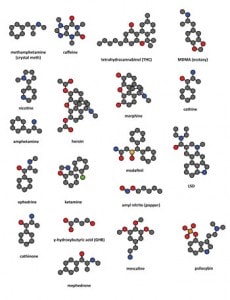 Drug smugglers will go to great lengths to get their products into Australia. It seems they will also try equally hard to get drug precursors like ephedrine into the hands of those who need the right supplies to manufacture ice (methamphetamine or crystal meth) and other drugs. That is not surprising given the increase in drug use by Australians. However, it is often surprising what smugglers choose to hide the drugs or drug precursors in as they try to escape detection by customs officials.
Drug smugglers will go to great lengths to get their products into Australia. It seems they will also try equally hard to get drug precursors like ephedrine into the hands of those who need the right supplies to manufacture ice (methamphetamine or crystal meth) and other drugs. That is not surprising given the increase in drug use by Australians. However, it is often surprising what smugglers choose to hide the drugs or drug precursors in as they try to escape detection by customs officials.
The variety of hiding places and the ingenuity of drug smugglers is a sad commentary for Australia. Smugglers would not risk detection if they thought they would have trouble selling the drugs or if there was not a lot of money to be made by helping people get addicted. What can employers learn from smugglers? They can take note of the fact that people with addictions will attempt to hide their drugs in unusual and unexpected ways. Looking at some of the ways drugs were hid in 2013 is eye-opening and a reminder that due diligence in maintaining a substance free workplace requires a quality drug and alcohol testing program and a good understanding of the level of desperation people reach as they strive to maintain their addictions.
Vanilla Powder to Steering Wheel Locks
In October 2013, an enormous shipment from India, containing precursor substances used to manufacture ice, was discovered. This was the second such shipment discovered that month, making Australians wonder how many drugs had made it into the country undetected. The first seizure consisted of vanilla powder that was mixed with pseudoephedrine. A large ephedrine shipment in September, also from India, was hidden in rice. Though the recent shipments are believed to have been initiated by a Canadian-based international crime syndicate, the people arrested most recently when the shipments were confiscated included Australians, Indians, and Canadians, reflecting the global nature of drug smuggling.1
Putting the ephedrine in vanilla powder is obviously an attempt to hide the illicit substances. The police are not sure if the same syndicate would have manufactured the ice or if it intended only on selling the pseudoephedrine to people running meth labs. Over 18 months, more than two tonnes of drugs or drug precursors were seized. Vanilla powder sounds innocuous and obvious at the same time. However, there have been a number of inventive ways drugs and precursor chemicals have been hidden in an attempt to get them into Australia.
The Australian Customs and Border Protection Service could undoubtedly tell some interesting stories about drug smuggling. In 2013, the desperate attempts to hide drugs led to the use of unusual items. The agents found drugs in artificial flower arrangements, a baby’s pram, a fax machine, a coffee machine, suitcases, and in shipments of bolt cutters, bathroom titles, and much more. Ephedrine was found hidden in steering wheel locks in consignment shipments coming from Ireland, China, India, and Hong Kong.2
Desk Drawers to Coffee Cans
Large, legitimate manufacturers and imports/exporters have learned from these busts and perform their own security checks to ensure workers do not add anything to shipments that could get employers into trouble. However, all employers should be aware of the fact that workers determined to smuggle drugs into the workplace or to use drugs whilst working, will go to equally great, though smaller, efforts to hide the drugs. They have been hidden behind desk drawers, in empty fluid cans, in cans filled with coffee, computers, supplies orders, customer shipments, and so on. Awareness and knowledge are two of the most powerful tools for maintaining a substance free workplace, and the random drug and alcohol testing program contributes to increasing both.
No one knows what 2014 will bring in the way of innovative drug smuggling efforts. What is known is that the more successful Australian federal officials are at catching these illicit shipments, the more creative smugglers get. Australian employers need to ensure their drug and alcohol policy is regularly updated and that the testing program uses high quality supplies and screening services. They also need to stay alert for new drug trends and smuggling strategies.
Mediscreen (mediscreen.net.au) is a NATA accredited onsite drug and alcohol collecting agent and screening service offering technologically current equipment, supplies, and procedures. Employers serious about maintaining a substance free workplace will find Mediscreen’s services to be invaluable to their efforts.
References
- Nino Bucci. Indian chemicals seized in ice raid. (2013, October 13). Retrieved December 28, 2013 from The Canberra Times: http://bit.ly/1eEd0Du
- Deadlier than ever: Welcome to the ice age. (13 Nov 2013). Retrieved December 28, 2013 from News.com.au: http://bit.ly/1jjTcZG.


